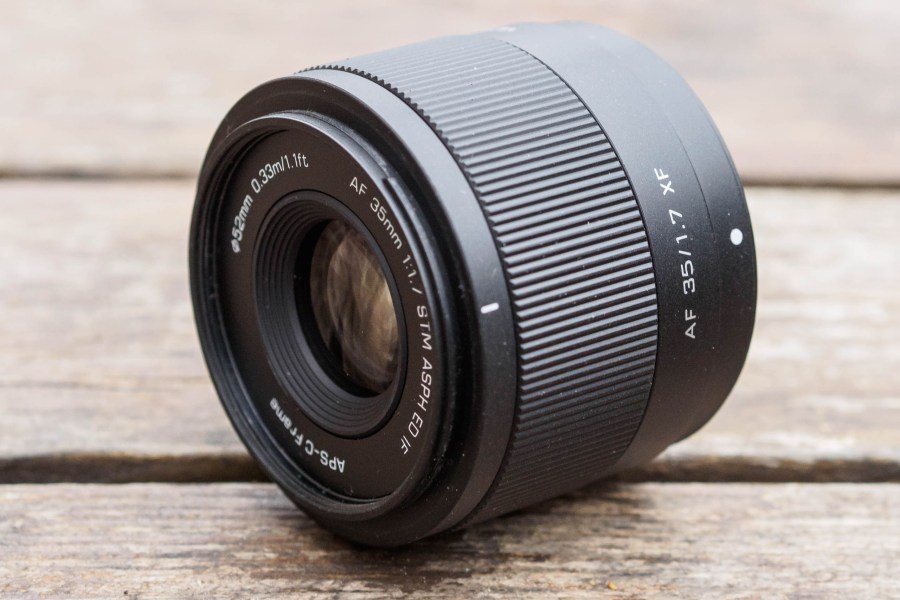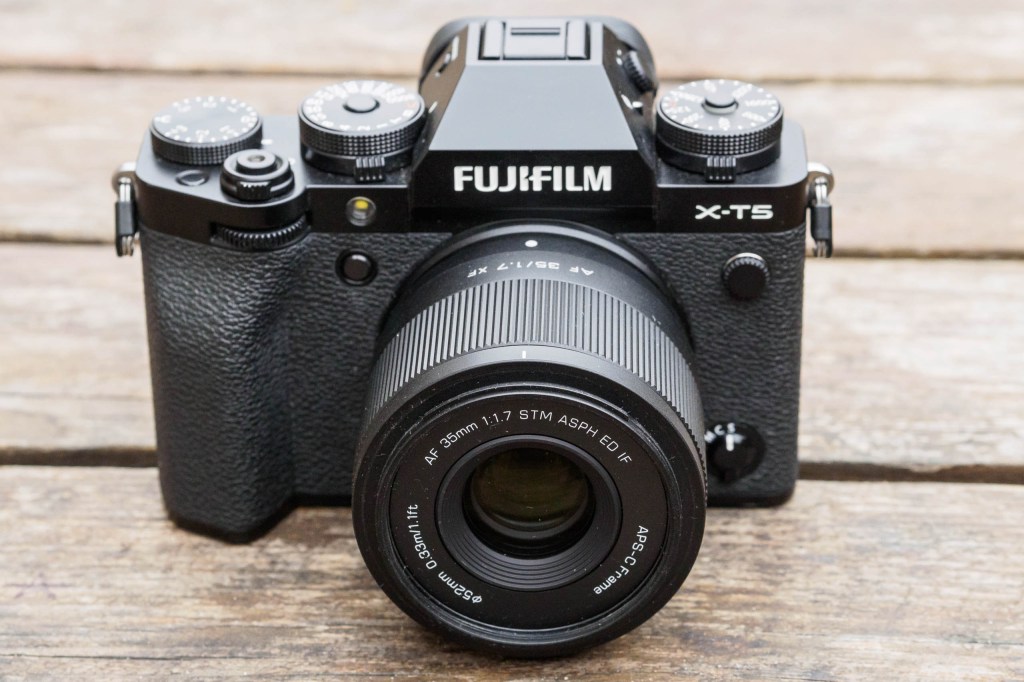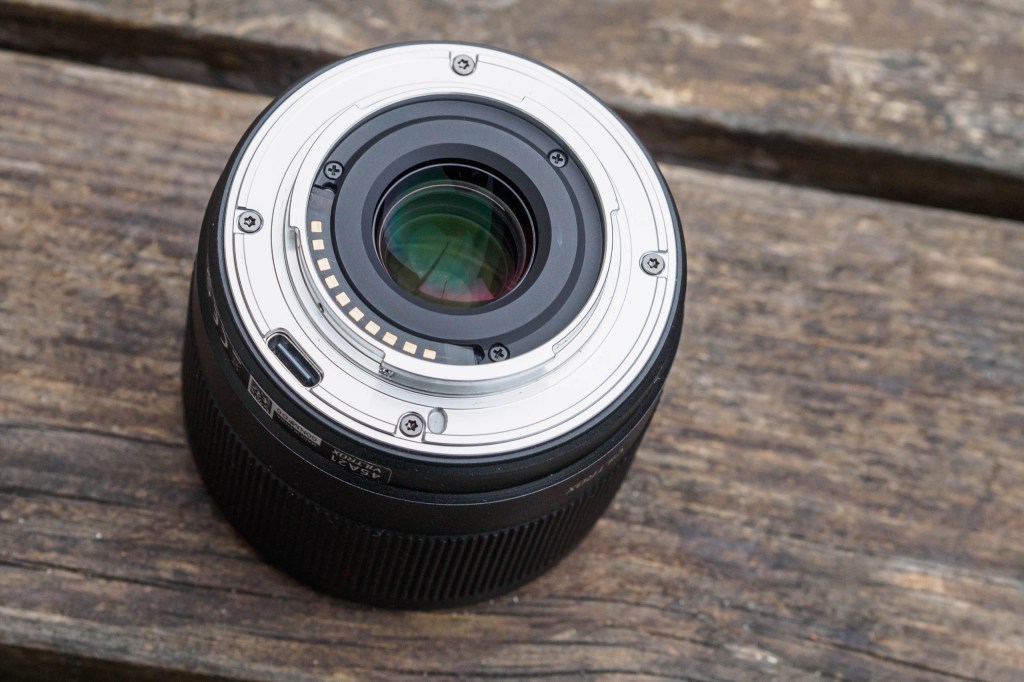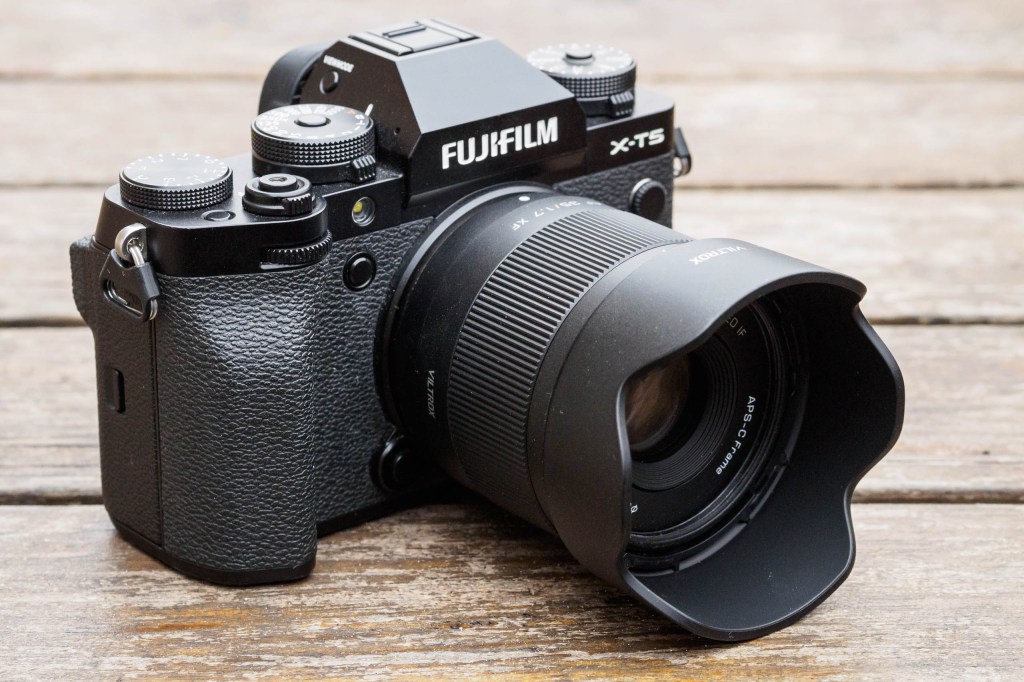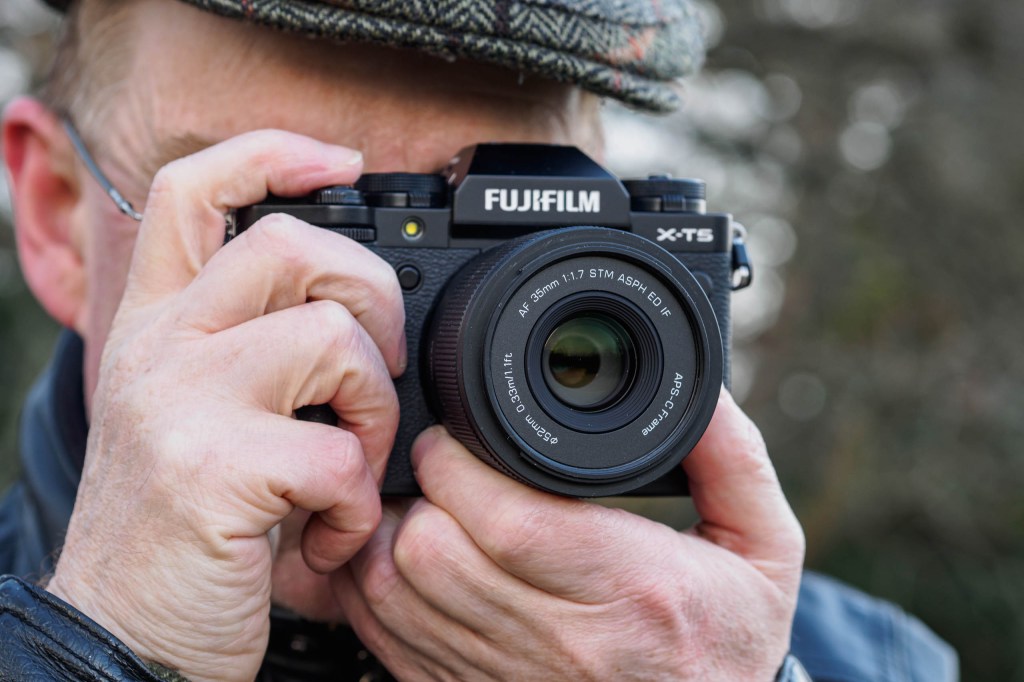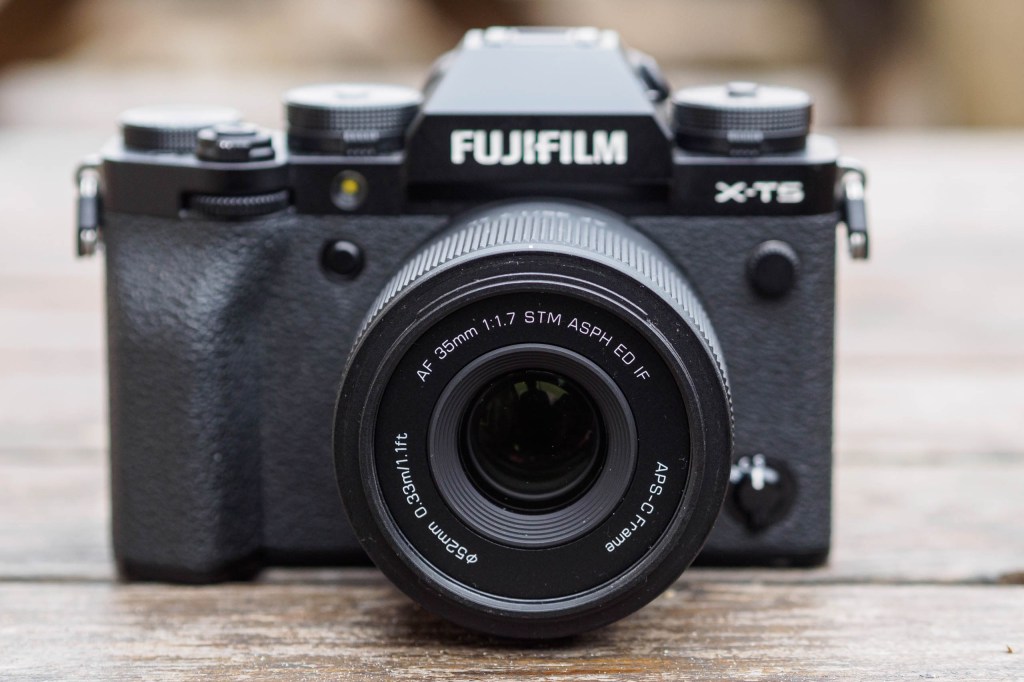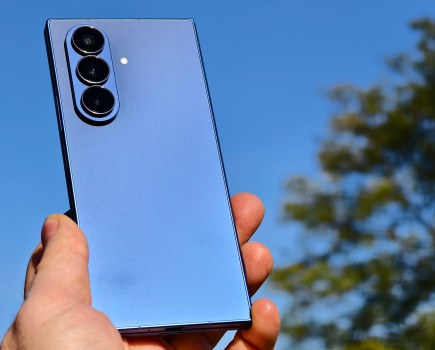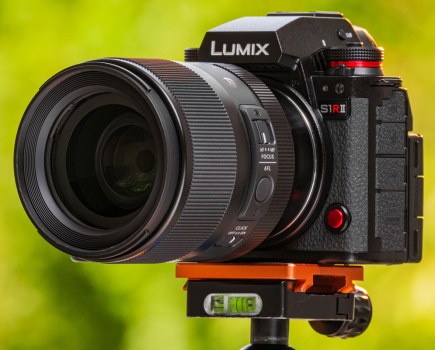Amateur Photographer verdict
The Viltrox AF 35mm F1.7 provides very respectable optics, quiet and accurate autofocus, and perfectly nice build quality, all at an attractive price. A lens this cheap has no right to be this good.- Small and lightweight
- Quiet, accurate autofocus
- Good build quality for the price
- Very creditable optics
- No aperture ring
- Not available in Canon RF mount
Viltrox is one of several Chinese makers currently shaking up the lens market with strikingly affordable designs. Its Viltrox AF 35mm F1.7 is an autofocus standard prime for APS-C mirrorless cameras, offering a field of view equivalent to a 53mm lens on full-frame. This makes it suitable as an everyday lens for a wide range of subjects.
Viltrox AF 35mm F1.7 at a glance:
- $179 / £179
- For APS-C format mirrorless cameras
- 53mm equivalent focal length
- 33cm minimum focus
- 56.4mm x 64mm diameter, 170g
- Available in Fujifilm X, Nikon Z, and Sony E mounts
This lens is part of Viltrox’s entry-level ‘Air’ range, all of which share the essentially the same external design and dimensions. For APS-C shooters, there are also 25mm F1.7 and 56mm F1.7 optics, while full-frame users get AF 20mm F2.8, AF 40mm F2.5, and AF 50mm F2.0 lenses. All of these lenses are similarly affordable.
With a considerably larger aperture than a kit zoom, it should be good for low-light shooting, or when you wish to blur away an out-of-focus background. It’s available in Fujifilm X, Nikon Z, and Sony E mounts, and costs just $179 / £179. I tested the Fujifilm X-mount version.
Given its super-low price point, the Viltrox AF 35mm F1.7 doesn’t have a great deal of competition. The closest alternative is the very similar Fujifilm XC 35mm F2, which costs $199 / £169. But there’s nothing quite like that for other brands.
Sony makes an optically stabilised E 35mm F1.8 OSS, but it’s much more expensive, at £325. Nikon’s most affordable alternative is the Nikkor Z DX 24mm F1.7, but of course it’s rather wider. So is the Viltrox 35mm a cut-price pretender, or a genuine contender?
Features
Looking first at the optics, Viltrox has constructed the lens using 11 elements in 9 groups. This includes two elements made of high refractive-index (HR) glass, one made of extra-low dispersion (ED) glass, plus an aspherical element. Together, these should reduce colour fringing and help maintain sharpness towards the corners of the frame. On paper, these optics look more sophisticated than Fujifilm’s 9-element, 6-group design in the XC 35mm F2.
Autofocus uses stepper motor (STM) technology, promising fast, quiet and accurate focusing. The minimum focus distance is 35cm, which gives a maximum magnification of 0.13x. Focusing is internal.
It should come as no surprise, given the price, that there’s no weather-sealing of any description. However, Viltrox has applied a water and oil-repellent coating to help keep the front element clean. The filter thread is 52mm and a lens hood comes in the box.
Like other Viltrox lenses, a USB-C port is embedded into the mount for upgrading the firmware, if required. At the time of writing, though, the firm hasn’t delivered any updates.
Build and handling
Design-wise, there’s not much to say here. The lens has just a single external control, with the ridged manual focus ring covering almost half the barrel. It rotates nice and smoothly, with no end stops.
At 64mm in diameter, 56.4mm in length, and 170g, the Viltrox AF 35mm F1.7 is a bit larger than the likes of the Nikon Z DX 24mm F1.7 or Fujifilm XC 35mm F2, but not by enough to matter. It’s smaller than 33mm or 35mm f/1.4 optics, though.
Despite its lowly price, the lens comes across as perfectly nicely made, with a sturdy-feeling plastic barrel and metal mount. I used it on the Fujifilm X-T5, on which it was a very agreeable lightweight companion.

Unlike the firm’s more expensive optics, there’s no aperture ring, so you have to use a dial on the camera to change this setting. For Fujifilm users, spinning past the minimum f/16 setting gives the camera automatic control over the aperture. In effect, this enables the use of program and shutter priority modes.
Autofocus
You might think that with such an affordable lens, there’d be some compromise in terms of autofocus. But that’s not particularly the case. It’s not as quick as more expensive optics, but it’s quiet and accurate, and ultimately gets the job done with minimal fuss.

Click on any sample image to see the full resolution version
Focus breathing is detectable if you go looking for it, with the angle of view narrowing fractionally at close distances. That won’t bother stills photographers, but it’s something that videographers might want to keep an eye on. However, it probably won’t be a problem in the normal course of events.
Manual focus works nicely when you need it, with the smoothly rotating ring offering precise control. It works perfectly with all the focusing aids on Fujifilm cameras, too.
Performance
But how about the results – does the Viltrox AF 35mm F1.7’s image quality reflect its bargain price? Here I was pleasantly surprised, because in fact it does a very creditable job. Strikingly, it delivers better results than the more expensive Viltrox AF 33mm F1.4 when shot side-by-side, with sharper detail towards the edges of the frame, and considerably reduced colour fringing at large apertures.

Overall sharpness is very good, with crisp detail right across the image when stopped down to its optimum apertures of around f/4 to f/8. Unsurprisingly it looks slightly softer wide open, especially on the X-T5’s 40MP sensor, but you’ll only really see this when zooming right into your images onscreen. In real-world use, these small differences in sharpness will normally be swamped by shallow depth-of-field effects.
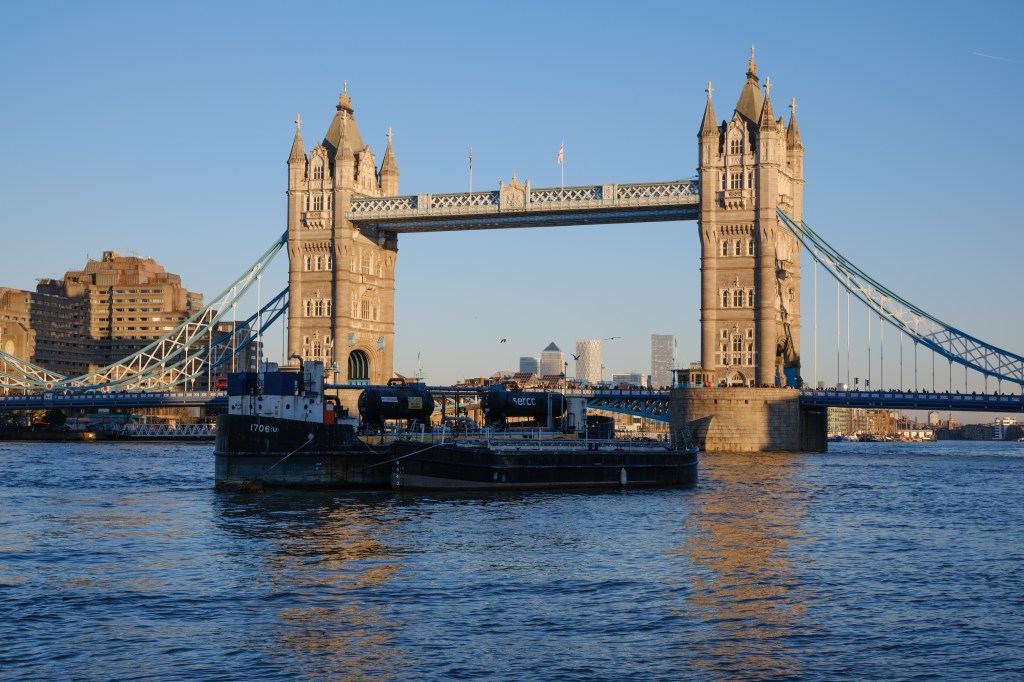
Stop down to f/11 or f/16, and fine detail blurs slightly due to diffraction. But that might be an acceptable compromise in exchange for extended depth-of-field.
Detail rendition is generally maintained very well through the focus distance range, too. Not surprisingly, though, images can look distinctly soft when shot at large apertures and close range, with a dreamy ‘glow’ around sharp edges that’s characteristic of spherical aberration. But you can tease more out of raw files by applying additional Texture and Clarity in raw processing, if you wish. The flipside to this softness is lovely smooth bokeh when shooting close-ups.

Impressively, there’s practically no colour fringing visible towards the corners of the frame due to lateral chromatic aberration. There can, however, sometimes be a little green fringing around high-contrast features in out-of-focus backgrounds at large apertures. But again, you have to go looking for it.
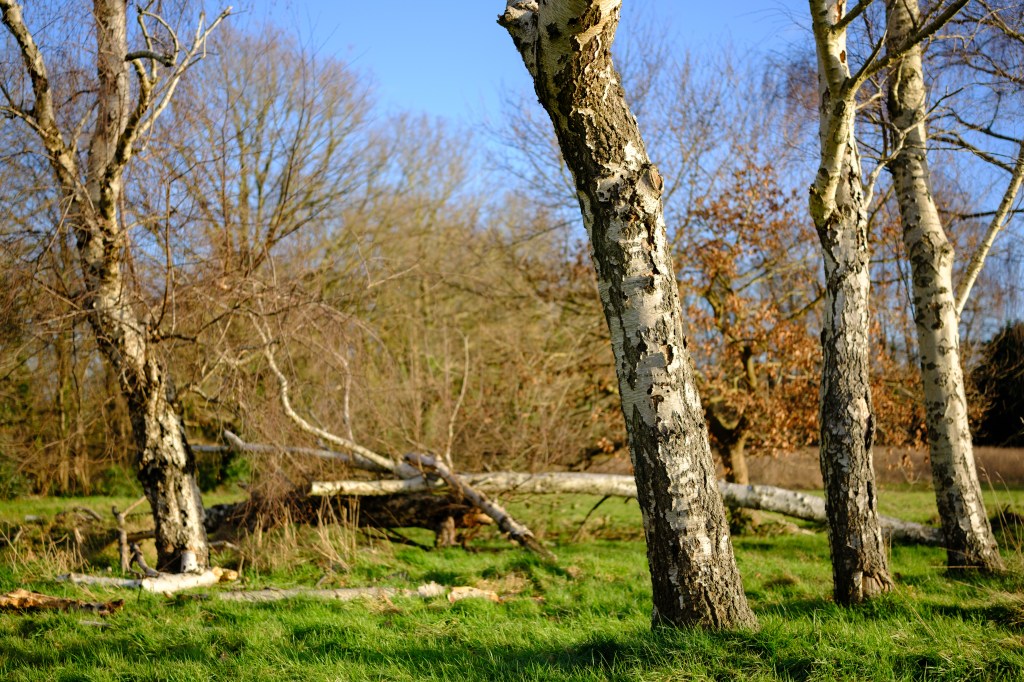
Unusually, Viltrox doesn’t appear to be using any software compensation for lens aberrations. As a result, images from the AF 35mm 1.7 suffer from slight pincushion distortion. Most of the time this won’t matter, but when you do need perfectly straight lines along the edges of the frame, it can be corrected using a value of -3 in Adobe Camera Raw’s Optics tab.
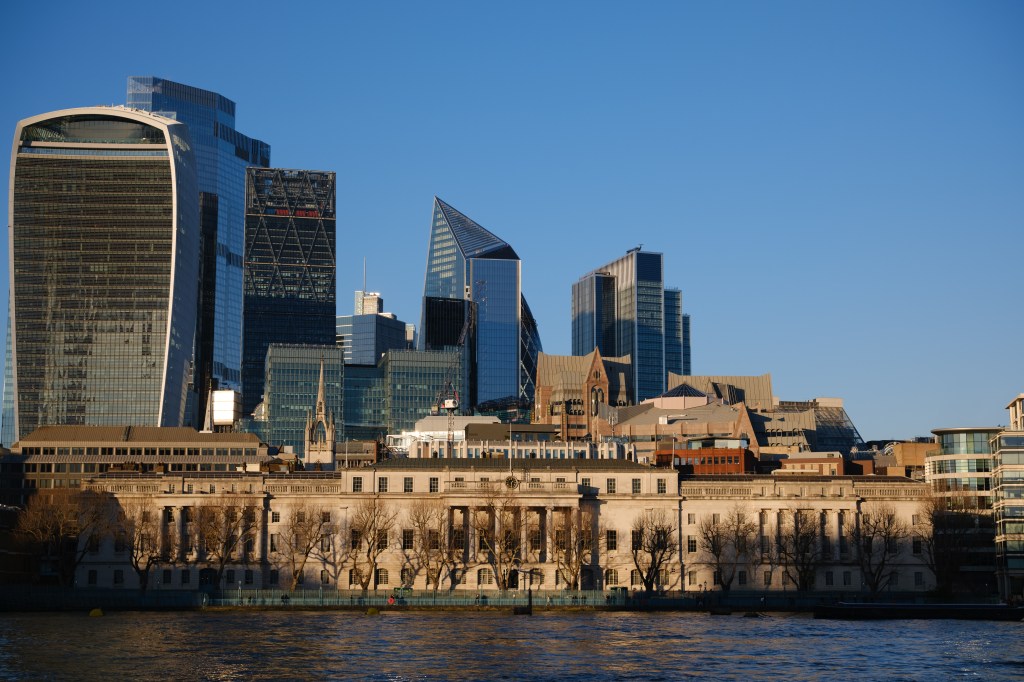
Some pretty strong vignetting can be visible with the aperture wide open, but it goes away almost completely on stopping down f/4. This is also simple enough to fix in raw processing, if you want to. But often, it will complement the subject anyway.

The lens fares reasonably well when shooting into the light. It’s possible to get some prominent flare spots when the sun is directly within the frame, but overall contrast is maintained nicely. It’s not so great for sunstars when shooting landscapes, though, giving an indistinct mess rather than nice sharp rays.
Viltrox AF 35mm F1.7: Our Verdict
With its Air series range, Viltrox has been doing a great job of delivering small, lightweight and highly affordable lenses. The AF 35mm F1.7 is a case in point. It provides very respectable optics, quiet and accurate autofocus, and perfectly nice build quality, all for a very attractive price. Honestly, a lens this cheap has no right to be this good.
Naturally, you do give up a few niceties compared to more expensive lenses. Most obviously, there’s no weather-sealing, optical stabilisation, or aperture ring. But you’ll have to pay considerably more if you need any of these features.
For Fujifilm users, there’s still a real choice to be made between this lens and the XC 35mm F2. But with the Viltrox, you’re getting a half-stop larger aperture, a metal lens mount, and a hood supplied in the box, all for less money. Even for famously brand-loyal Fujifilm fans, that’s got to be a tempting proposition.

For Nikon or Sony APS-C users looking for an everyday prime on a budget, though, the Viltrox AF 35mm F1.7 is a shoo-in recommendation. It’s just a shame it’s not yet available in Canon RF mount. Hopefully, that’ll appear in due course.

Follow AP on Facebook, X, Instagram, YouTube and TikTok.
Viltrox AF 35mm F1.7: full specifications
| Price | £139 |
| Filter Diameter | 52mm |
| Lens Elements | 11 |
| Groups | 9 |
| Diaphragm blades | 9 |
| Aperture | f/1.7 – f/16 |
| Minimum focus | 33cm |
| Length | 56.4mm |
| Diameter | 64mm |
| Weight | 170g |
| Lens Mount | Fujifilm X, Nikon Z, Sony E |
| Included accessories | Caps, hood |

